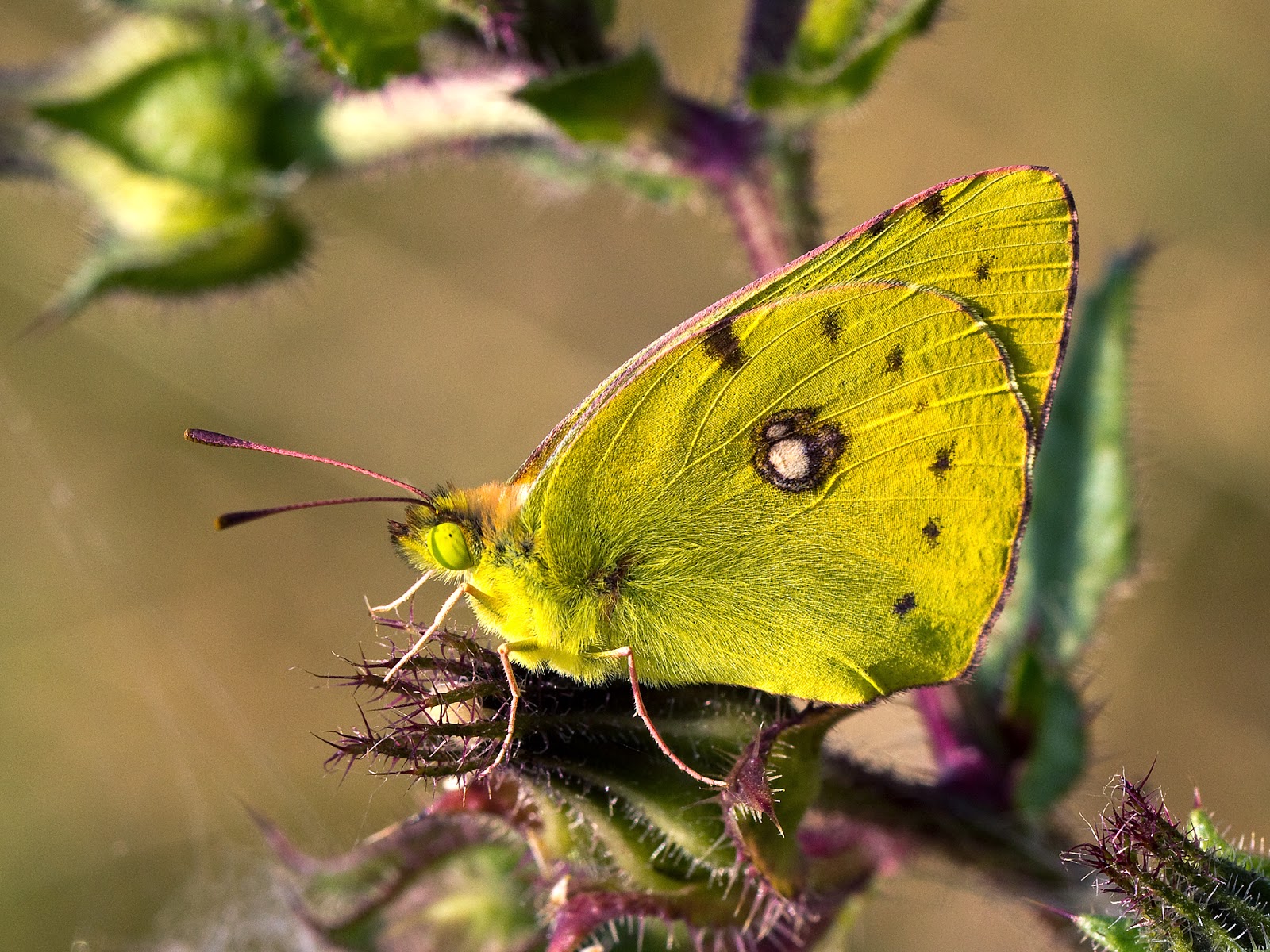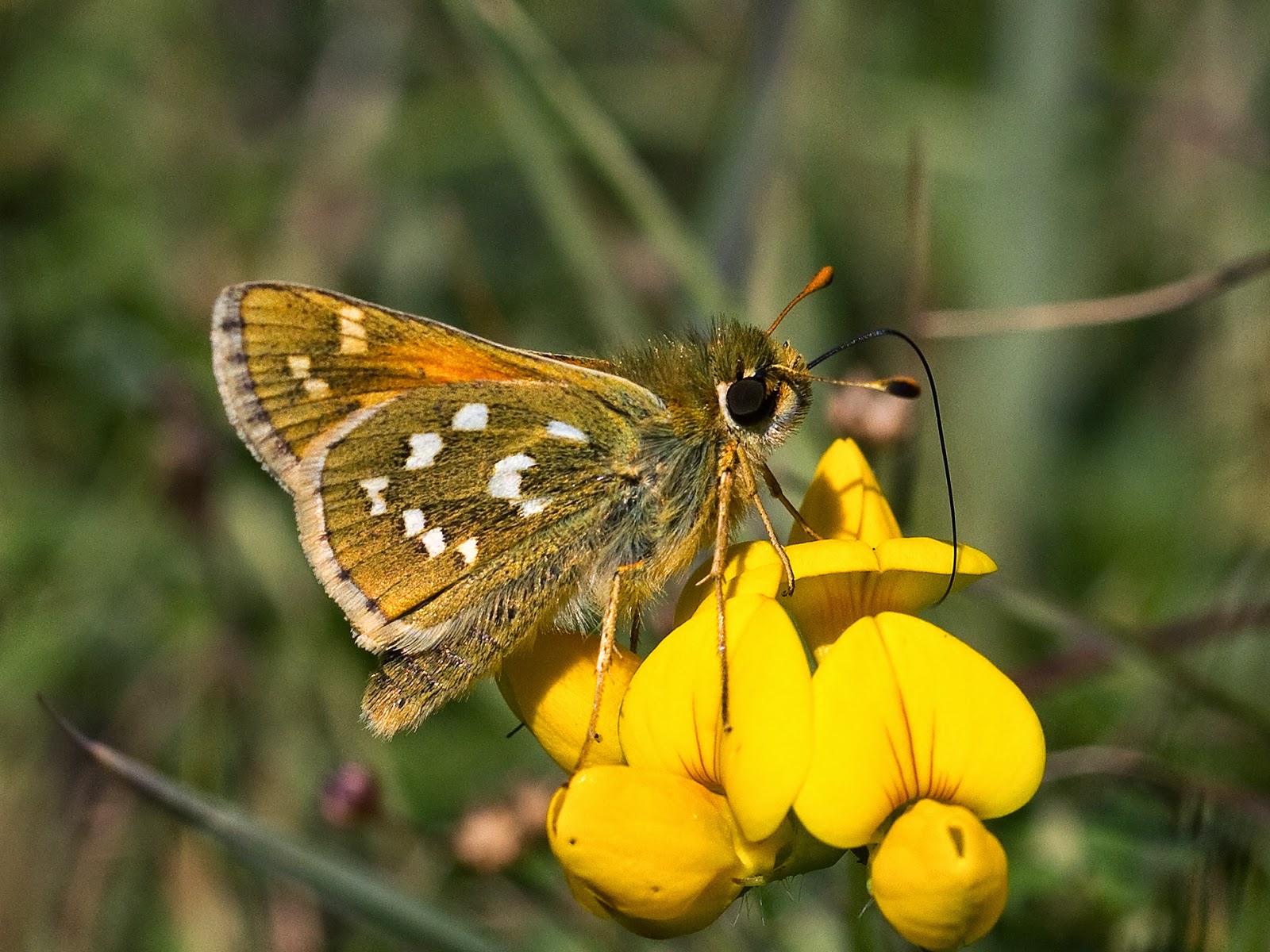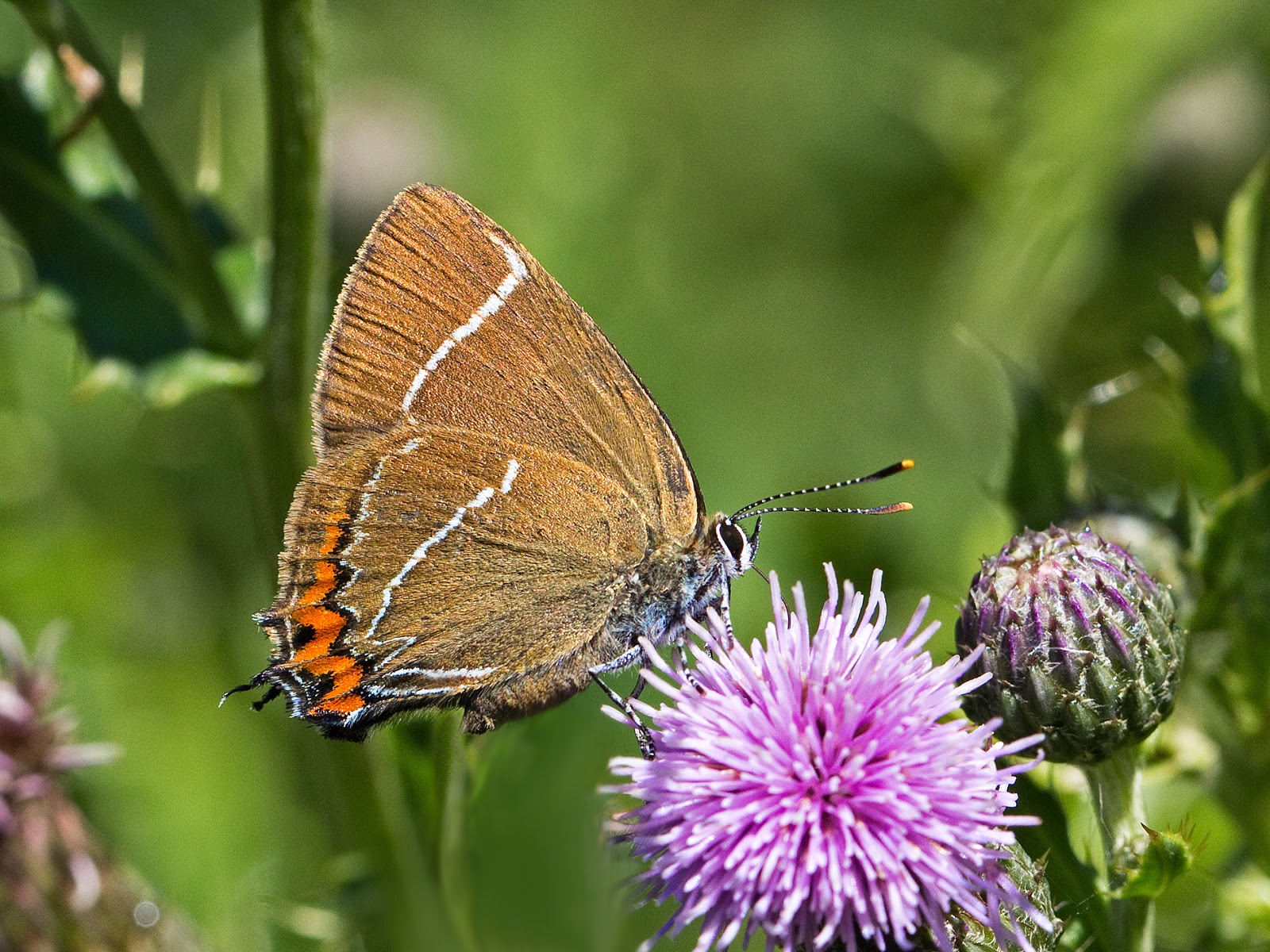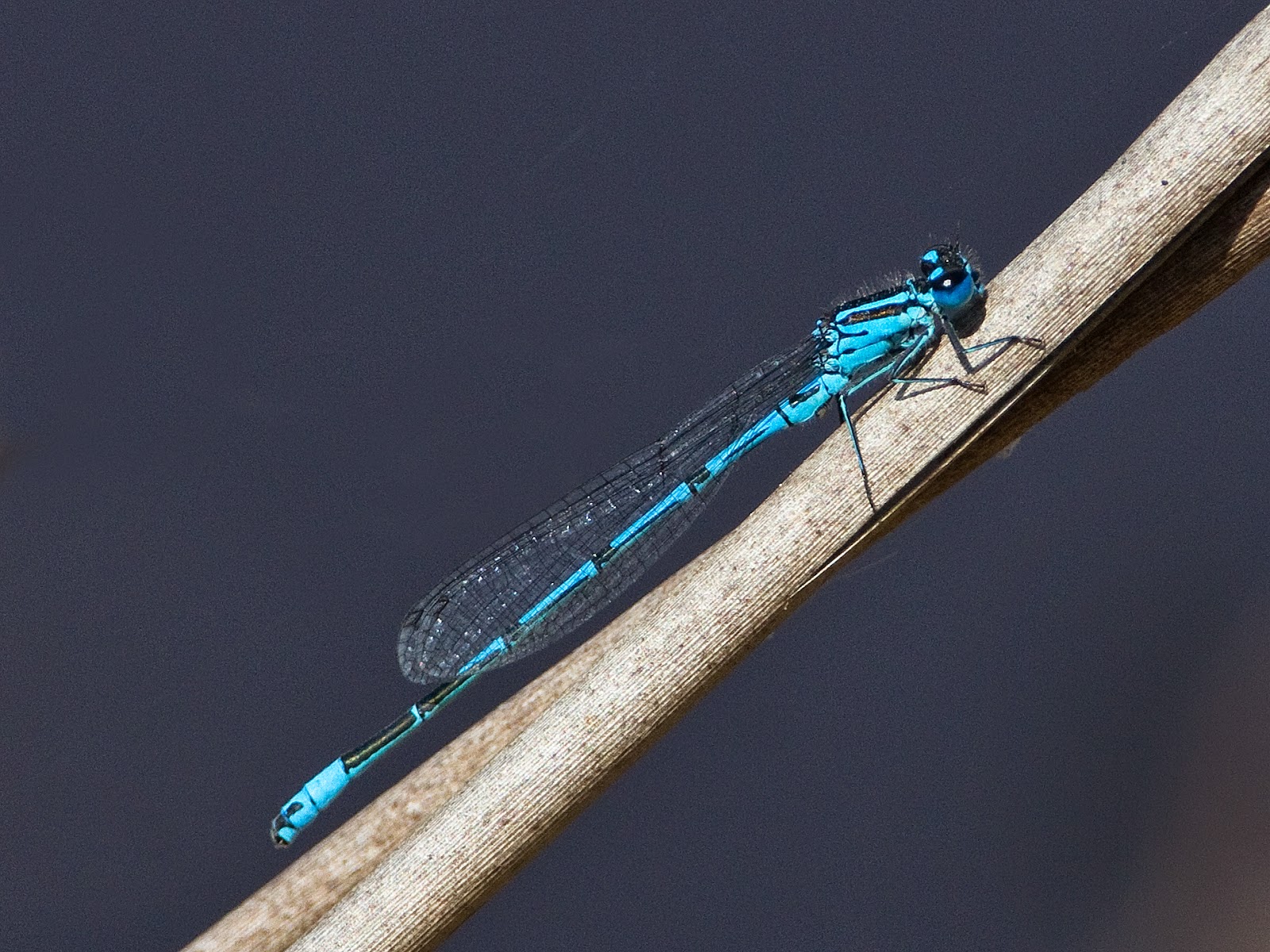Butterflying has one big advantage over birding, if you do your research and get your timing right the butterflies will be there. That doesn't always happen with the birds. I think our only real failure this year has been in searching for Small Pearl-bordered Fritillaries in Sussex where three trips to Park Corner Heath have left me without a result.
Monday saw us out again, this time at Windover Hill looking for Grayling. I didn't really know what to expect. I had never seen a Grayling before and their cryptic camouflage is supposed to make them difficult to find. That was the case when we first arrived on the hill. We found Marbled Whites, Wall, and Small Coppers, along with the usual suspects but no Grayling.
 |
| Rather tatty Wall on a cow pat |
 |
| This one in better condition but not giving open wing shots |
Whilst searching for the Grayling we also found a few moths including a freshly emerged Oak Egger and a Yellow Pearl
mecyna flavalis. The latter is a rarity in Sussex although it seems quiet common on Windover Hill where there is reported to be a colony of them.
 |
| Oak Egger - freshly emerges and still blowing up its wings |
 |
| Oak Egger |
 |
| Yellow Pearl mecyna flavalis |
This was our first visit to Windover Hill. It looks to be a great site for butterflies but we were beginning to think that we had come a week too early. Fortunately Dave had wandered off in pursuit of a Small Copper and I was soon chasing after him when he found our first Grayling of the day. There was the usual scramble to make sure we both had a record shot but then when we looked around it was clear that there were a good number flying. We counted five in the air at the same time but that was just in the one small location. Over the side of the hill there must have been at least twenty.
 |
| Grayling showing cryptic camouflage |
The Grayling tended to land on bare earth and broken rock where the camouflage was very effective but this did not make for a good picture. In fact it proved very difficult to get any distance between the Grayling and its background. An out of focus plain green background would have shown the detail much more effectively but I guess you can't have everything - at least not this time.
 |
| The eye pops up as a defence response |
 |
| They nearly always settle with the wings closed |
Then just as we were starting to get a bit bored we came across a mating pair and a few more pictures were taken.
 |
| Mating pair |
Tuesday and we were hoping to repeat our success by finding a Silver-spotted Skipper. This was another new location, Newtimber Hill, and for me another new butterfly. The search was a partial success. Dave found the skipper and managed to take a photograph. I did get to see it but just as I pressed the shutter button for my record shot it took off. It moved with surprising speed for a Skipper, we didn't see it go and we could not relocate it despite a couple of hours of looking. So if you want to see a picture of the Silver-spotted Skipper you will have to look at Dave's
blog site.
We had regular visits from a Small Copper whilst we were looking. This was showing blue spots on its rear wings and is of the form
caeruleopunctata or should it be referred to as an ab.
caeruleopunctata? The books do not seem to be clear on the difference between an aberration (ab) and a "form". At the moment I am taking it that they are both caused by the same triggers but an aberration is a variation that is a rarity whilst a form is a variation that is consistent and common. If you are interested read more about it
here.
 |
| Small Copper ab. caeruleopunctata |
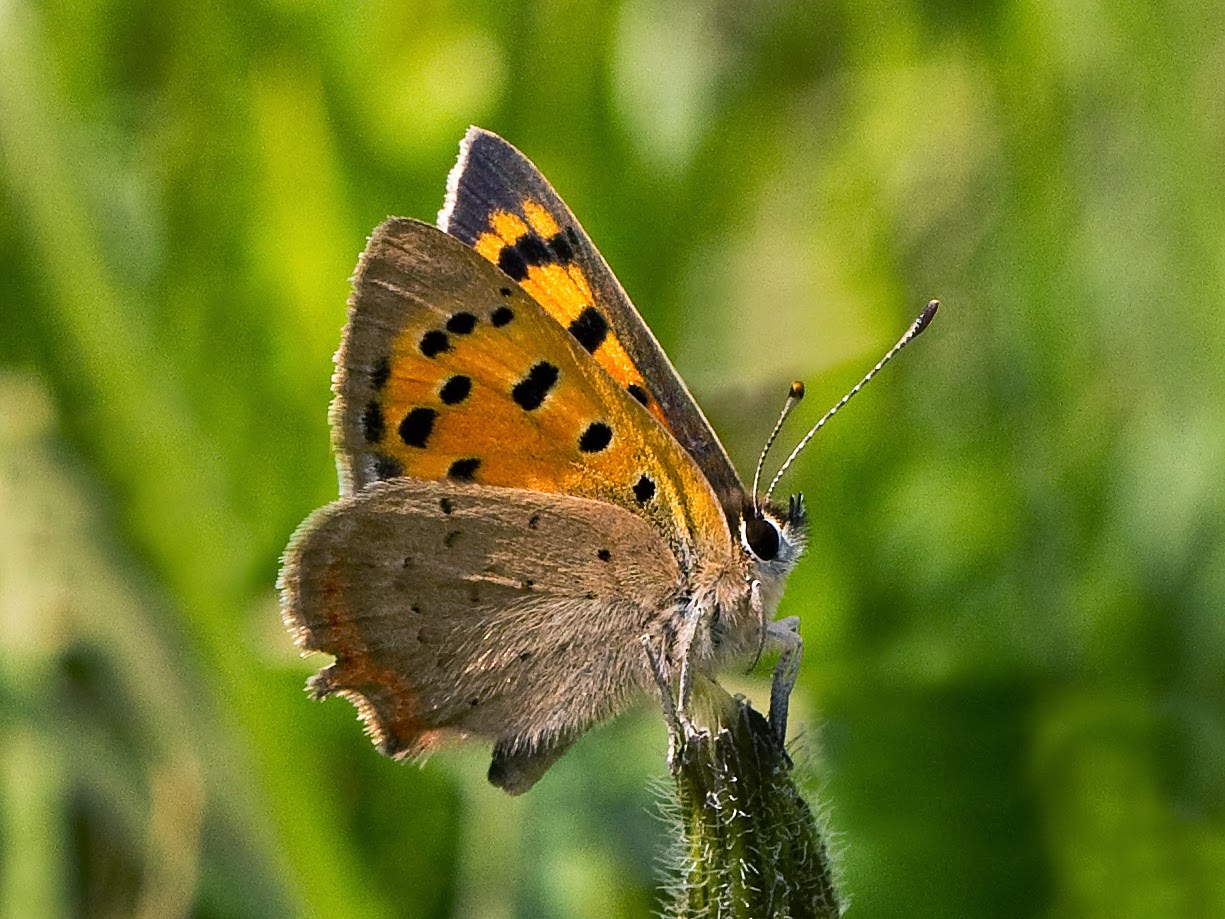 |
| Small Copper |
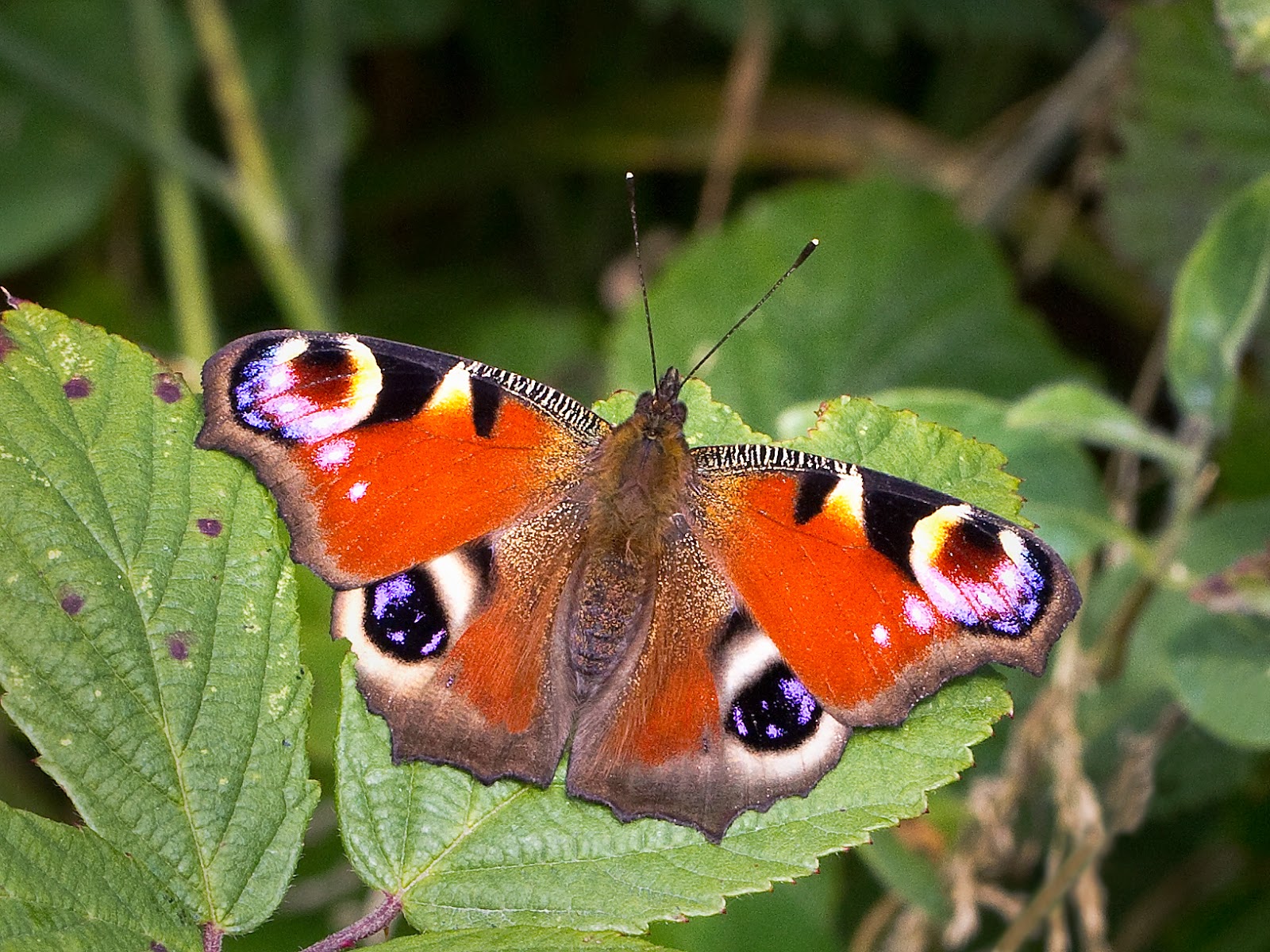 |
| Peacock |
We made a quick trip to Chantry Hill in the afternoon. There were a lot of Dark Green Fritillaries on the track between the car park and the hill but most of these were in poor condition. There were also a good number of Marbled Whites and these looked surprisingly fresh.
It was a hot day and I was beginning to feel tired but then I spotted a pair of mating Dark Green Fritillaries. I only managed one quick shot before they took off and disappeared down the hill.
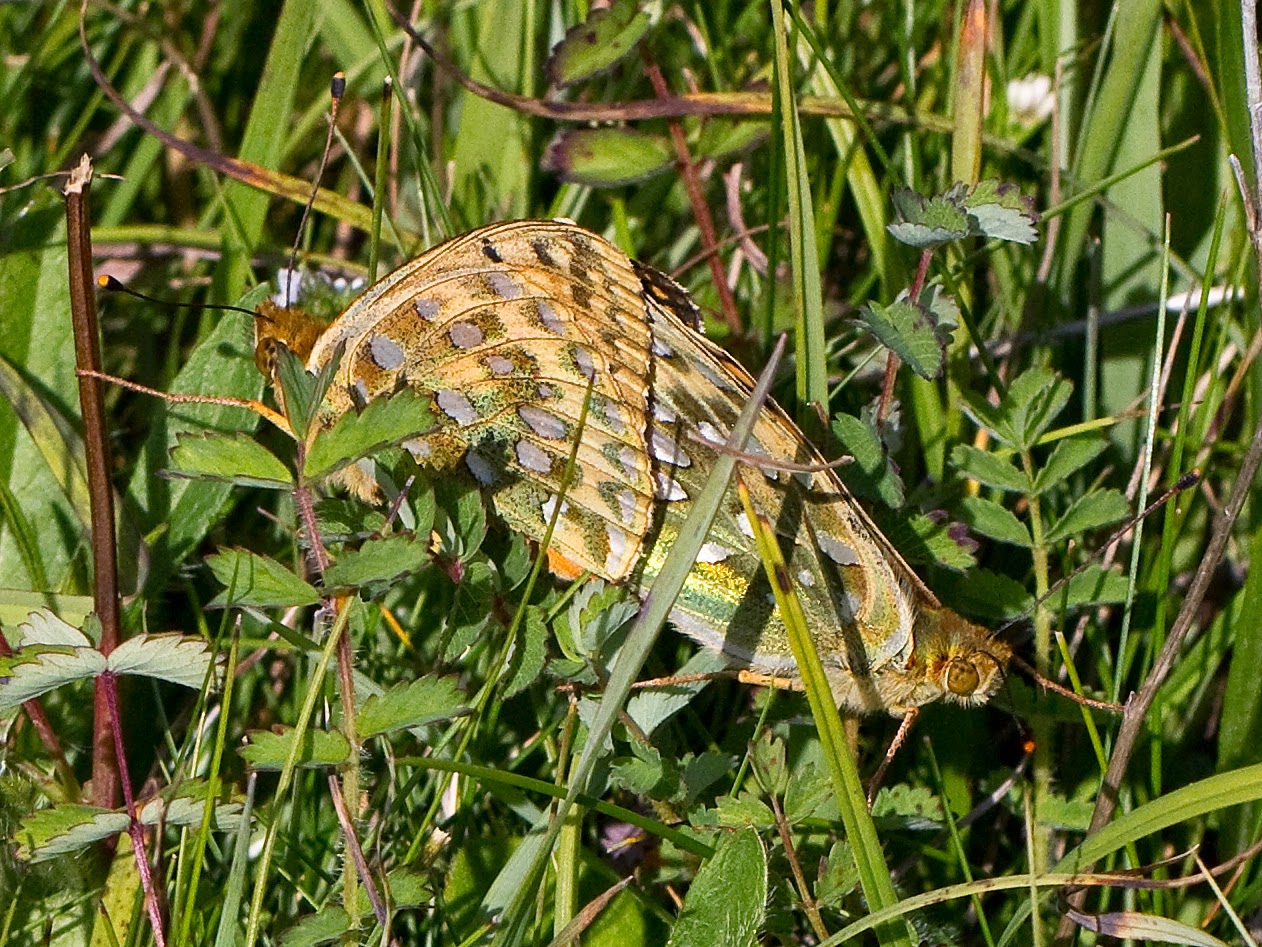 |
| Mating Dark Green Fritillaries |
There was clearly a good shot to be had here and I was quickly off in pursuit. I did manage to catch up once about half way down the hill but they were flying again almost as soon as I got to them. By the time I got to the bottom of the hill they had disappeared altogether. It was only then that it dawned on me that I had to climb all the way back up and it's a big hill. Butterflying can be hard work.
